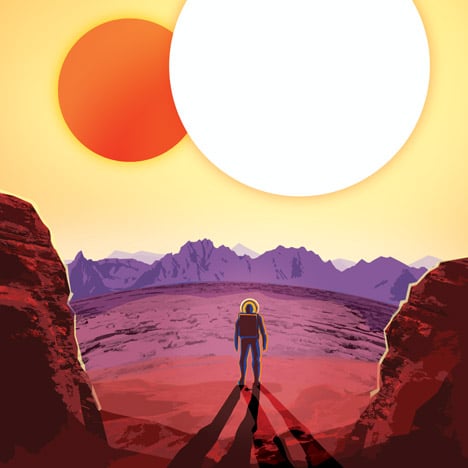
10 designs for the future of space travel
As advances in technology put space travel back on the agenda, we've rounded up some of the best interstellar design from the pages of Dezeen.
Architects, designers and big business are increasingly turning their attention to space. With projects exploring habitable 3D-printed structures on the moon, the colonisation of Mars and vehicles designed to take us to the outer-edges of Earth's atmosphere, they are transforming science fiction dreams into tangible realities.
Mars Colonisation by ZA Architects
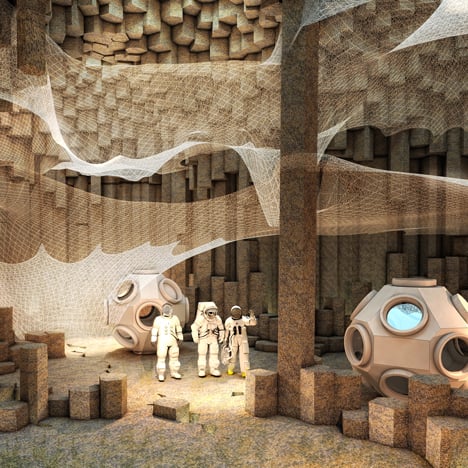
German firm ZA Architects proposed sending an advance party of solar-powered robots to Mars to dig underground dwellings for curious space travellers seeking shelter. "Curiosity sooner or later will bring human to Mars and wouldn't it be nice to have permanent station to explore it?" said Arina Ageeva of ZA Architects.
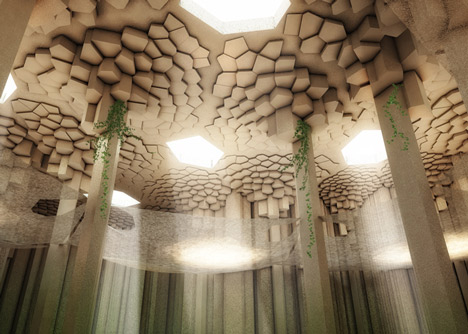
Once the machines have dug out caves from the basalt bedrock, humans could arrive and take over – extending the shelters to create the conditions for mass colonisation.
Mars has been the focus of a number of projects, after 200,000 people applied to be part of the Mars One mission to colonise the red planet. Tesla founder Elon Musk is due to unveil his concept for Mars colonisation later this year. Find out more about the Mars Colonisation project »
Moon structures by Foster + Partners
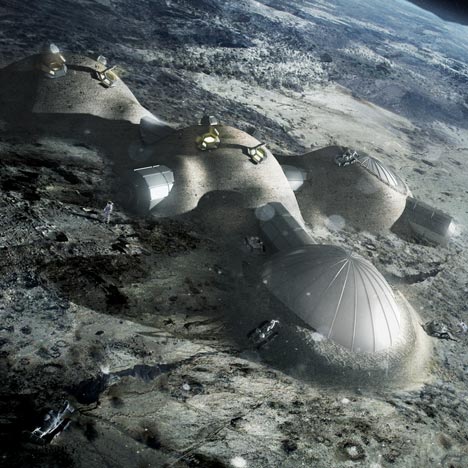
Other space-based architecture proposals include this 3D-printed lunar base by Foster + Partners. The London-based architecture firm worked with the European Space Agency to investigate ways of constructing homes on the moon, settling on the method of 3D printing with lunar soil itself.
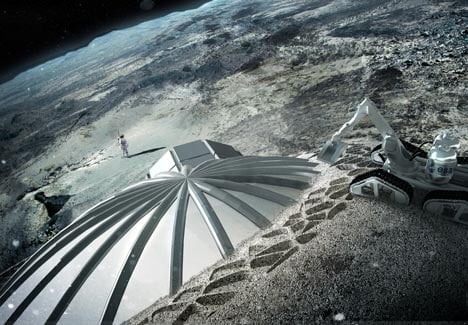
The finished structure could house four people and offer protection from fluctuating temperatures, meteorites and gamma radiation. Find out more about Foster's 3D-printed moon base »
NASA's 3D printing factory in space
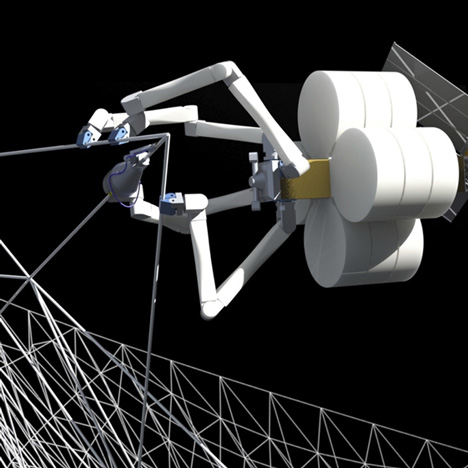
3D printing and robots could also be used in the search for extra-terrestrial life, according to NASA. The orbital factory NASA is developing with technology firm Tethers Unlimited Inc (TUI) will use 3D printing and robots to fabricate giant structures such as antennas and solar arrays of up to a kilometre in length.
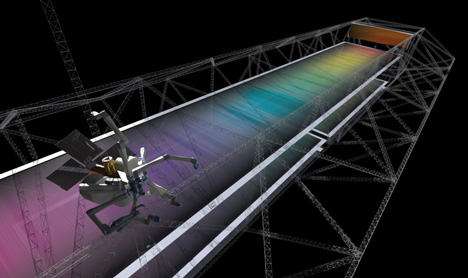
"This radically different approach to building space systems will enable us to create antennas and arrays that are tens-to-hundreds of times larger than are possible now,"explained TUI CEO and chief scientist Dr Rob Hoyt. "This will provide higher power, higher bandwidth, higher resolution, and higher sensitivity for a wide range of space missions."
Recently NASA achieved the first steps in making this project a reality, after successfully producing the first 3D-printed object on the International Space Station. Find out more the extra-terrestrial 3D-printing factory »
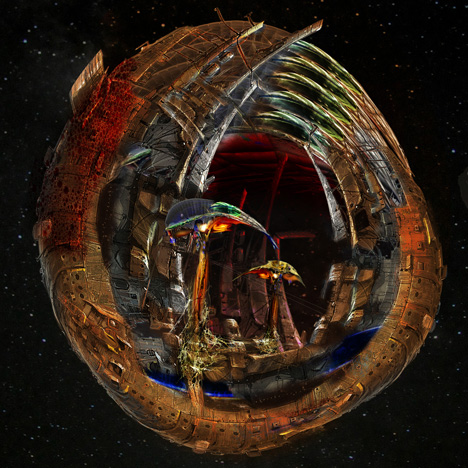
There have been numerous plans to 3D print structures in space, but could we grow a city organically in zero gravity? Senior University of Greenwich lecturer Rachel Armstrong is currently investigating just this, with plans to grow cities from soils as part of a project called Persephone.
Led by the Icarus Interstellar foundation, the ambition of the project is to achieve interstellar space travel by the year 2100. Find out more about growing a city in space »
Prepping the human body for long-distance space travel
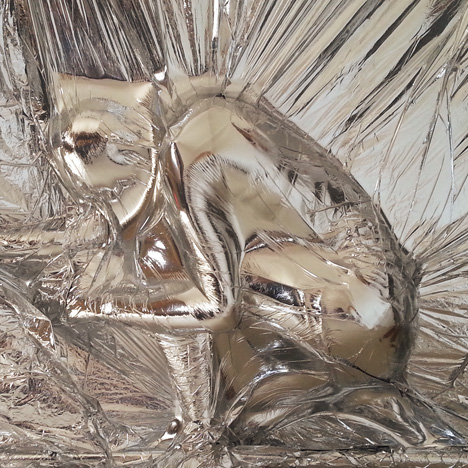
If we're going to journey across our solar system and beyond, we'll need to prepare the human body for long-distance space travel. Artist Lucy McRae exhibited a speculative vacuum chamber with this in mind at our Dezeen and MINI Frontiers exhibition last September.
"I'm keen on exploring how the body could start changing in order to withstand long periods of time and space," McRae explained. "That's what this project is looking at - it's prepping the body to go to space."
McRae's installation consisted of a series of pods, which visitors were invited to step inside to be vacuum-packed in silver foil blankets, emulating elements of pressure training used by astronauts. Find out more about Lucy McRae's space travel installation »
Exploring Venus with inflatable "habitats"
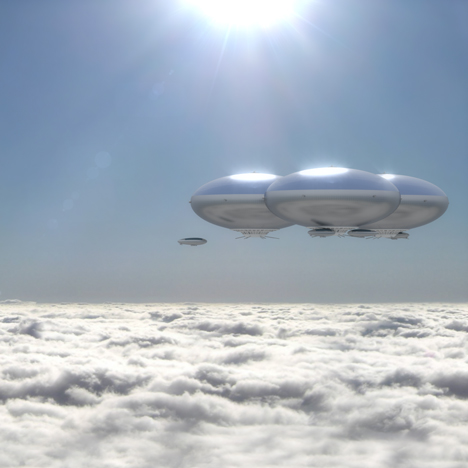
In December last year NASA unveiled a research project to send astronauts to Venus, envisioning Zeppelin-like pods designed to be "lighter-than-air".
"A recent internal NASA study of a High Altitude Venus Operational Concept (HAVOC) led to the development of an evolutionary program for the exploration of Venus, with focus on the mission architecture and vehicle concept for a 30 day crewed mission into Venus's atmosphere," said a statement from NASA's Space Mission Analysis Branch (SMAB).
Each air ship could house two astronauts for up to a month in the upper atmosphere of the planet Venus – which NASA says would take less time to explore than Mars. Find out more about NASA's HAVOC project »
Journey to Space capsule for space tourists
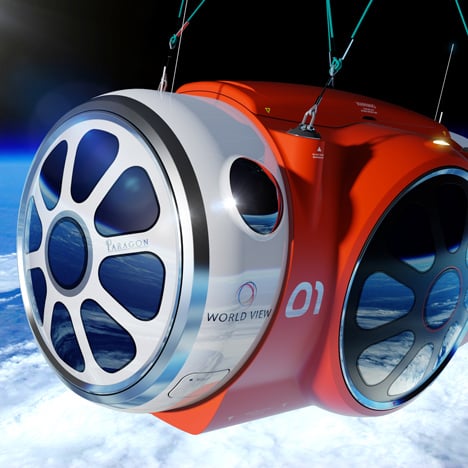
British studio Priestmangoode designed this capsule that will float passengers up to the edge of space, offering views of the Earth's curvature.
Developed for the World View programme set up by US space development corporation Paragon, the lightweight pressurised vessel is capable of carrying six passengers and achieves its high altitude as a result of a large helium balloon.
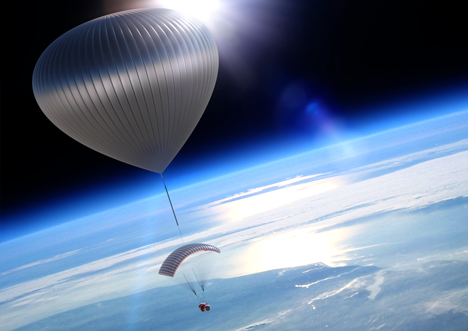
"When you think about going near the edge of space you think of some sort of Star Wars-type craft, something which has direction and speed but obviously this is very, very different," Priestmangoode director Nigel Goode told Dezeen,
"It would look very odd to have a craft stuck at the bottom of a balloon so the shape was really designed for strength and for maximum visibility for the people on board." Find out more about the space tourism capsule »
Spaceport America by Foster + Partners
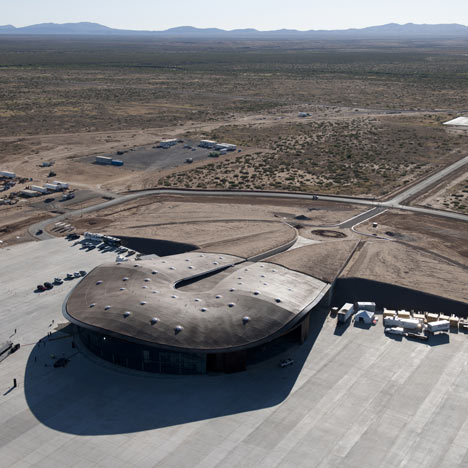
Foster + Partners completed the world’s first space terminal for tourists in 2011. Located in New Mexico, the building hosts experimental Virgin Galactic space craft designed to carry passengers to the outer limits of Earth's atmosphere.
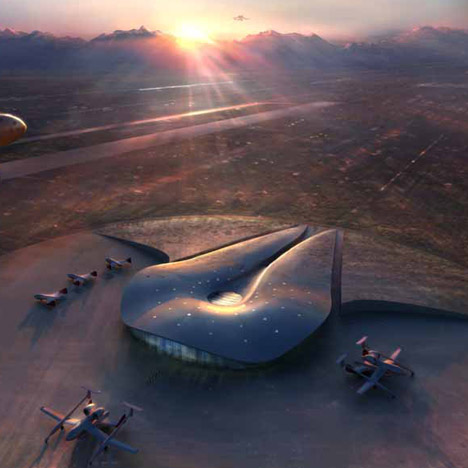
Full-height glazing wraps around one end of the low-rise structure, which can be entered via a deep channel cut into the landscape. The building contains a mission control centre, astronaut preparation facilities as well as a friends and family area. Find out more about the Virgin Galactic Spaceport »
SpaceShipTwo by Virgin Galactic
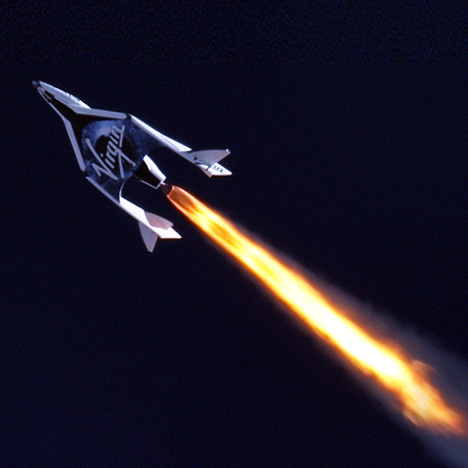
Richard Branson's Virgin Galactic organisation has been racing to develop the first air craft to make space tourism a reality. But space travel will never be without its dangers. Despite earlier successful test flights, Virgin's SpaceShipTwo tragically crashed in November 2014, killing seasoned co-pilot Mike Alsbury.
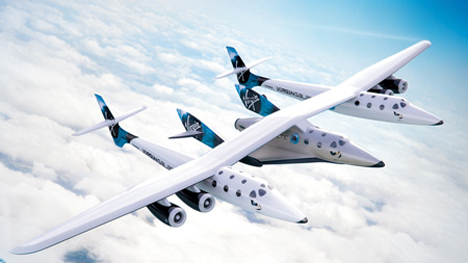
"Space is hard - but worth it," said Virgin founder Richard Branson. "We will persevere and move forward together." Find out more about Virgin Galactic's SpaceShipTwo »
NASA's travel posters for newly discovered planets

As interest in space tourism continues to grow, NASA's Jet Propulsion Laboratory created posters for a fictional space travel agency called the Exoplanet Travel Bureau advertising holidays on recently discovered planets that could potentially support life.
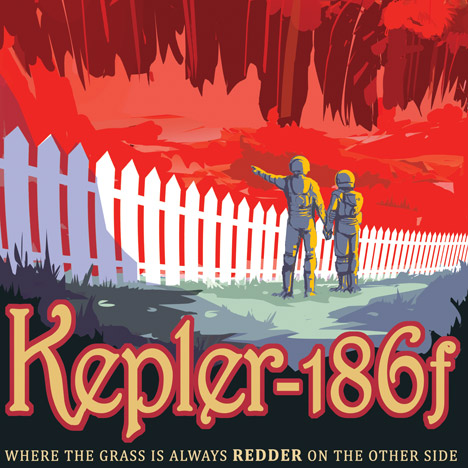
Designed in the style of vintage travel posters, the images depict real planets found by NASA's Kepler telescope, highlights individual features that could draw visitors, including stronger gravity for extreme sports and double sunsets. Find out more about NASA's posters »